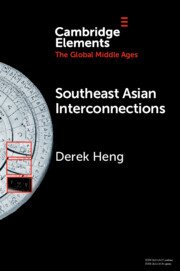Element contents
Southeast Asian Interconnections
Published online by Cambridge University Press: 03 December 2022
Summary
- Type
- Element
- Information
- Online ISBN: 9781108907095Publisher: Cambridge University PressPrint publication: 05 January 2023
References
- 8
- Cited by

